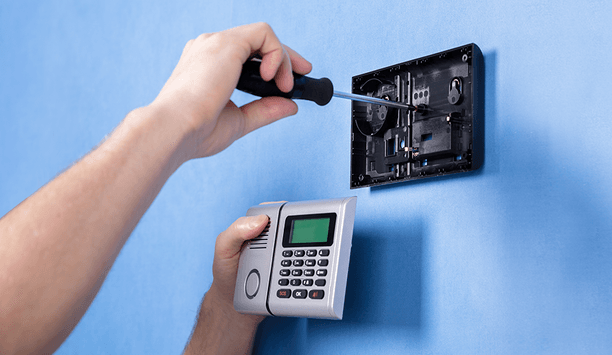Mitchell Kane

Mitchell Kane
President, Vanderbilt IndustriesMitchell Kane serves as President of Vanderbilt Industries, overseeing all aspects of the business. Mr. Kane has more than 30 years of experience in the security industry, a founding partner of Integrated Access Systems/Geoffrey Industries, acquired by Ingersoll Rand in 2003. In 2012, Vanderbilt Industries was formed as an access control/CCTV business unit spin-off from Ingersoll Rand, and today, remains a global leader in creating state-of-the-art security systems.
Round table contributions
Enterprise customers provide a large, and very lucrative, business opportunity for the physical security market. These customers include big global companies with plenty of revenue to spend and employ...
We have been hearing about smart buildings for more than a decade, but the increasing profile of the Internet of Things (IoT) expands the possibilities for intelligent building systems and makes them...
There’s a huge cloud hanging over the physical security market, but in a good way. Cloud-based systems, whether for video, access control or another category, are on the verge of taking the indu...
Big data is a buzzword, and data – presumably of all sizes – is a driving force in the physical security market. As systems become more sophisticated and expand their capabilities, the res...
For many years, cybersecurity was the unmentioned elephant in the room. Possible vulnerability of IP-connected devices to a cyber-attack was seldom, if ever, mentioned, and even the most basic measure...
Hospitals and healthcare facilities are an important vertical sector in the physical security market. Protecting healthcare facilities is a rich opportunity to leverage the value of physical security...
Technology is changing at a break-neck pace, and the security marketplace is currently being bombarded by a wealth of new capabilities and innovations. But what will be the impact? Which of the curren...
As security industry buzzwords go, “convergence” is perhaps the best known and most pervasive. We have been hearing about convergence in our market for almost 20 years. We have heard it&rs...
Lower equipment prices (with less margin) are one industry trend leading more integrators to seek out new sources of revenue. With margins shrinking on lucrative, but unpredictable, “project-bas...
The minutes are counting down to one of the biggest security industry trade shows of the 2017 calendar. Expectations are high going into ISC West 2017 in Las Vegas: Last year’s show was very wel...
Open systems are great at providing freedom for end user customers. But does the term “open system” mean the same thing throughout the industry? In the bad old days before the introduction...
The end of the year is a great time to reflect on what the security industry has accomplished and to look ahead. We invited our Expert Panel Roundtable to weigh in on what they expect looking forward...
In a fast-moving market like physical security, sharing information is an essential component of growth. However, there often seems to be more information available than an integrator or end user coul...
It’s a challenging time for security integrators and installers. Equipment prices are going down (along with margins), and commoditization is wiping away what used to be the advantage of exclusi...
The security market in the United States has been in a collective state of exhilaration since ISC West. The (possibly) unprecedented success of the big trade show has left us all feeling optimistic ab...
Articles by Mitchell Kane
Overall, it’s been quite a year for the industry and Vanderbilt. Last year, we predicted that the security industry would see a rise in cloud-based systems in 2017, and based on the developments...
The year of 2016 ended with Vanderbilt finalizing the acquisition of Access Control Technology Ltd., which strengthened the company’s product portfolio and introduced an entirely new market segm...
IT access control offers significant cost savings per unit or door as less hardware is required to cover a large area Over the last several years, there has been a revolution in acc...
While the access control market typically moves at a near glacial pace, 2015 brought quite a bit of news to the marketplace, including the rise in advanced biometrics, the development of more and more...
Integrators and end users should be aware that their definition of open might differ from those of security manufacturers Much of the buzz in the industry today about open architect...
Online wireless locks enable real-time online access control functionality Organizations require more than a “one-size-fits-all” approach from their access control techn...
News mentions
SourceSecurity.com’s Expert Panel covered a lot of ground in 2017 about a variety of topics resonating in the security market. The most-read Roundtable discussion...
Vanderbilt, a global provider of state-of-the-art security systems, has announced it will preview its new Vanderbilt ACT365 cloud-based access control and video management platform during the 2017 ASI...
For all its value in the security market, one has to wonder: How much captured video is actually used for security? Among hours and hours of video, only brief segments here or there are ever actually...
Vanderbilt is now an Authentic Mercury partner Vanderbilt, a provider of state-of-the-art security systems, continues to demonstrate its commitment to delivering open systems soluti...
SourceSecurity.com’s Expert Panel covered a lot of ground in 2016 about a variety of topics in our Roundtable discussions. The very most-clicked-on Roundtable discussion in...
Part 8 of our healthcare series Hospitals are challenging environments. A hospital requires oversight 24 hours a day, seven days a week Access control in particular has adv...
Part 6 of our Security in Healthcare series Lockdown capabilities are an important aspect of safety and security for hospitals, doctor’s offices and medical facilities...
Access control now includes a strong focus on the data integration sideof the business, as showcased at this year’s ISC West When the category of physical security emerged...
Vanderbilt VI Connect integrates Vanderbilt’s Security Management System with third-party applications Vanderbilt, a global leader in the delivery of innovative, highly reliab...
Product innovation may have slowed in the security market in the second half of the year. On the first day of the ASIS International Show in Anaheim, California, new product introductions seemed few a...
Gaul will be responsible for supporting Vanderbilt’s security integration partners and end users in the Midwest Vanderbilt, a global leader in the delivery of innovative, high...
The partnership combines Vanderbilt’s security management solutions with SwiftData’s Pinwheel DME Vanderbilt, a global leader in the delivery of innovative, highly relia...
Vanderbilt Industries and IDV Solutions, LLC recently announced that the companies have formed a technical partnership and completed an integration of Vanderbilt’s SMS physical access control sy...



































































